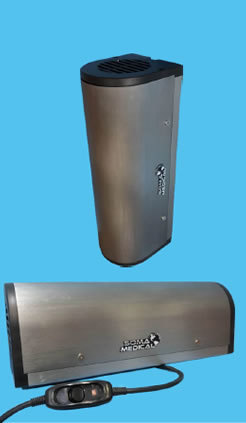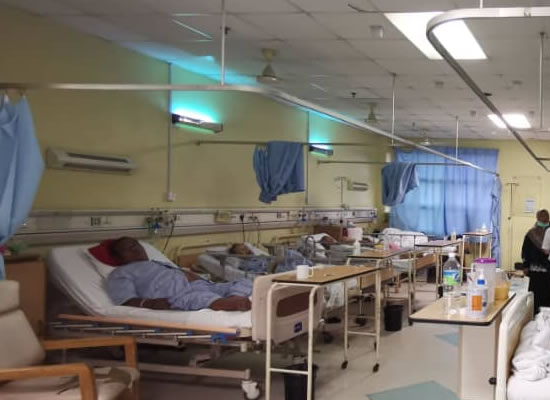How They Are Made
UVGI LEO 6 Air Sterilizer are designed for effective action in environments up to 125 cubic meters (roughly corresponding to a base area of 45 square meters).
For larger spaces it may be appropriate to install more units equally distributed in the environment.
The electro-photostatic filter removes particles up to 5 microns from the air, such as pollen, dust and other allergens. Ensures an ideal and lasting operation of the unit.
The ultraviolet light (UV-C) working at 253.7 nm emitted by the lamp eliminates bacteria, viruses, spores, molds and any other micro-organism present in the air.
The interaction of UV-C light with the titanium dioxide SM Nano1152 with the lamellae on the inner lining of the lid generates a natural phenomenon called 'photocatalytic oxidation' which causes a reduction of the organic vapors (VOC) present in the environment and mitigates the growth of bacteria, yeast and mold.
Incorporated is also a negative ionizer produces negative ions and causes a further reduction of fine dust and allergens, too small to be retained in the filter.
Images below are taken from an actual hospital in Malaysia.
Benefits
- Effective in the prevention of Tuberculosis, MRSA,H1N1 and other airborne cross contamination.
- Eliminates 99.9% of bacteria, yeast, mold and fungus problems found in hospitals, schools, food manufacturing plants and offices.
- Recommended by medical experts.
Kills harmful bacteria in closed premises.
- Reduces asthmatic effects.
Eliminates odours and neultralizes the air.
Where Can It Be Used
- Treatment of air in waste management facilities.
Removal of "bad air" in factories and adjacent offices.
- Food storage facilities (examples: cheese, wine, vegatable, fruit, meat.)
- Clinical environments such as clinics, hospitals, operating rooms, dental surgery, schools, holding facilities.
- Laboratoria and testing facilities that require a clinically clean environment.
- Food processing plantations.
- Decontamination of storage facilities.





